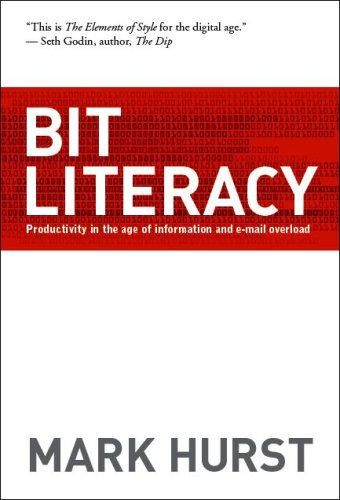
I truly only read this book because my brother-in-law and super businessman, JD Graffam, recommended it on a podcast he was speaking on. He mentioned that Bit Literacy had really helped him establish some good systems while staying focused on tasks and long-term projects that could otherwise be derailed by things like email, to-do lists, etc. Lots of good tips for organization and executive functioning skills.
I highlighted several things while reading and have posted those notes below…
- When bits are infinite, the only way to thrive is to pick up the eraser. This is letting the bits go: always looking for reasons to delete, defer, or filter bits that come our way. Anything else allows the bits to pile up. Success comes when we get the square empty. Thus another way of describing bit literacy is the constant attempt, in a world of infinite bits, to achieve emptiness. Page: 17
- Success in the bit world comes from creating a quiet, empty place where we can focus on the bits we want, when we want them. Page: 17
- As Richard Saul Wurman put it in his 1989 book Information Anxiety: “One of the most anxiety-inducing side effects of the information era is the feeling that you have to know it all. Realizing your own limitations becomes essential to surviving an information avalanche; you cannot or should not absorb or even pay attention to everything.” Page: 63
- Computer scientist Alan Kay once wrote that people only learn in relation to something they already understand. Page: 96
- The first job of a communicator is to ensure, before delivering the message, that the recipient has the right context. Page: 96
- The next upgrade, the next buzzword, the next fad all come and go, but the user stays. Bit literacy will remain, too: a discipline that invites users to let the bits go, in order to work more productively and live fuller, healthier lives. Page: 167
Categories:


